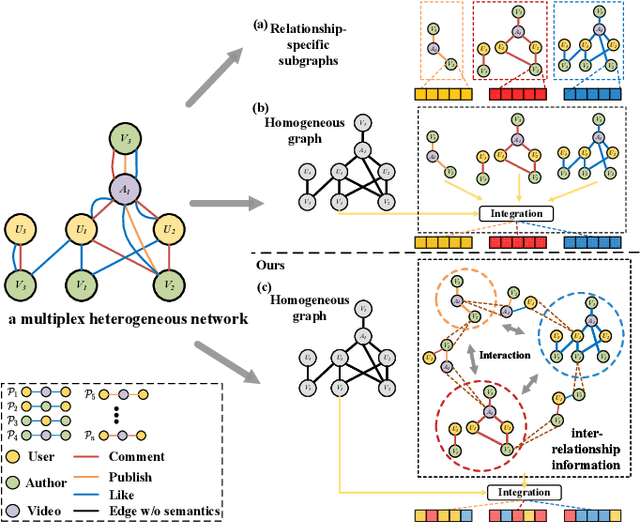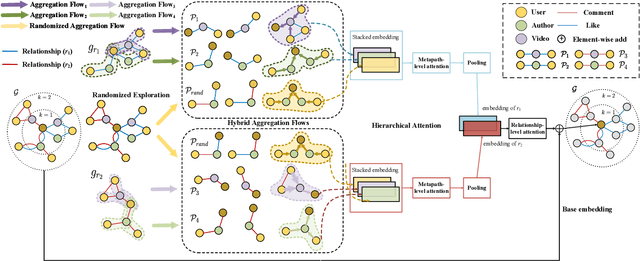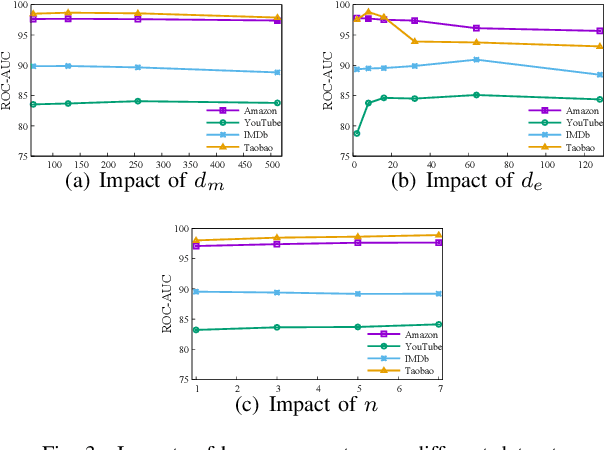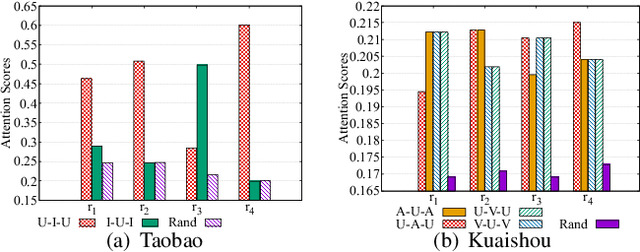Jingcao Xu
Graph Contrastive Learning with Generative Adversarial Network
Aug 01, 2023



Abstract:Graph Neural Networks (GNNs) have demonstrated promising results on exploiting node representations for many downstream tasks through supervised end-to-end training. To deal with the widespread label scarcity issue in real-world applications, Graph Contrastive Learning (GCL) is leveraged to train GNNs with limited or even no labels by maximizing the mutual information between nodes in its augmented views generated from the original graph. However, the distribution of graphs remains unconsidered in view generation, resulting in the ignorance of unseen edges in most existing literature, which is empirically shown to be able to improve GCL's performance in our experiments. To this end, we propose to incorporate graph generative adversarial networks (GANs) to learn the distribution of views for GCL, in order to i) automatically capture the characteristic of graphs for augmentations, and ii) jointly train the graph GAN model and the GCL model. Specifically, we present GACN, a novel Generative Adversarial Contrastive learning Network for graph representation learning. GACN develops a view generator and a view discriminator to generate augmented views automatically in an adversarial style. Then, GACN leverages these views to train a GNN encoder with two carefully designed self-supervised learning losses, including the graph contrastive loss and the Bayesian personalized ranking Loss. Furthermore, we design an optimization framework to train all GACN modules jointly. Extensive experiments on seven real-world datasets show that GACN is able to generate high-quality augmented views for GCL and is superior to twelve state-of-the-art baseline methods. Noticeably, our proposed GACN surprisingly discovers that the generated views in data augmentation finally conform to the well-known preferential attachment rule in online networks.
PANE-GNN: Unifying Positive and Negative Edges in Graph Neural Networks for Recommendation
Jun 08, 2023



Abstract:Recommender systems play a crucial role in addressing the issue of information overload by delivering personalized recommendations to users. In recent years, there has been a growing interest in leveraging graph neural networks (GNNs) for recommender systems, capitalizing on advancements in graph representation learning. These GNN-based models primarily focus on analyzing users' positive feedback while overlooking the valuable insights provided by their negative feedback. In this paper, we propose PANE-GNN, an innovative recommendation model that unifies Positive And Negative Edges in Graph Neural Networks for recommendation. By incorporating user preferences and dispreferences, our approach enhances the capability of recommender systems to offer personalized suggestions. PANE-GNN first partitions the raw rating graph into two distinct bipartite graphs based on positive and negative feedback. Subsequently, we employ two separate embeddings, the interest embedding and the disinterest embedding, to capture users' likes and dislikes, respectively. To facilitate effective information propagation, we design distinct message-passing mechanisms for positive and negative feedback. Furthermore, we introduce a distortion to the negative graph, which exclusively consists of negative feedback edges, for contrastive training. This distortion plays a crucial role in effectively denoising the negative feedback. The experimental results provide compelling evidence that PANE-GNN surpasses the existing state-of-the-art benchmark methods across four real-world datasets. These datasets include three commonly used recommender system datasets and one open-source short video recommendation dataset.
HybridGNN: Learning Hybrid Representation in Multiplex Heterogeneous Networks
Aug 03, 2022



Abstract:Recently, graph neural networks have shown the superiority of modeling the complex topological structures in heterogeneous network-based recommender systems. Due to the diverse interactions among nodes and abundant semantics emerging from diverse types of nodes and edges, there is a bursting research interest in learning expressive node representations in multiplex heterogeneous networks. One of the most important tasks in recommender systems is to predict the potential connection between two nodes under a specific edge type (i.e., relationship). Although existing studies utilize explicit metapaths to aggregate neighbors, practically they only consider intra-relationship metapaths and thus fail to leverage the potential uplift by inter-relationship information. Moreover, it is not always straightforward to exploit inter-relationship metapaths comprehensively under diverse relationships, especially with the increasing number of node and edge types. In addition, contributions of different relationships between two nodes are difficult to measure. To address the challenges, we propose HybridGNN, an end-to-end GNN model with hybrid aggregation flows and hierarchical attentions to fully utilize the heterogeneity in the multiplex scenarios. Specifically, HybridGNN applies a randomized inter-relationship exploration module to exploit the multiplexity property among different relationships. Then, our model leverages hybrid aggregation flows under intra-relationship metapaths and randomized exploration to learn the rich semantics. To explore the importance of different aggregation flow and take advantage of the multiplexity property, we bring forward a novel hierarchical attention module which leverages both metapath-level attention and relationship-level attention. Extensive experimental results suggest that HybridGNN achieves the best performance compared to several state-of-the-art baselines.
 Add to Chrome
Add to Chrome Add to Firefox
Add to Firefox Add to Edge
Add to Edge